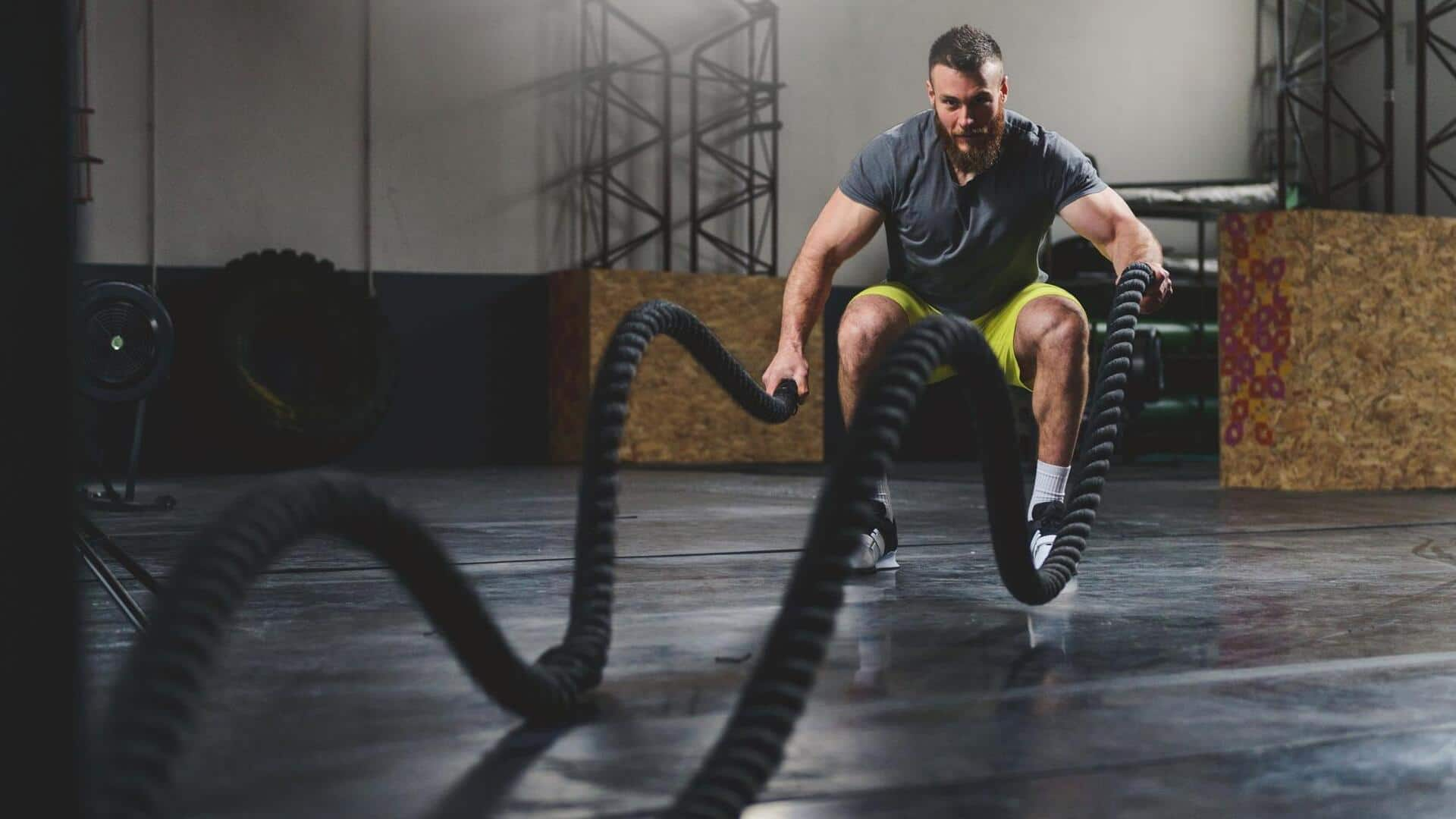
Boost your endurance with battle rope training
What's the story
Battle rope workouts are a dynamic way to build endurance and strength.
They utilize heavy ropes for a range of movements, engaging multiple muscle groups.
The intensity can be customized for all fitness levels, making it an ideal choice for beginners to seasoned athletes.
In this article, we explore ways to make the most out of battle rope, focusing on endurance improvement techniques.
Wave technique
Alternating waves for cardiovascular health
Alternating waves are a basic battle rope exercise that focuses on cardiovascular health.
As you move each arm up and down in an alternating motion, the ropes create waves that demand constant effort from your upper body muscles.
This spikes heart rate and builds cardiovascular endurance over time.
Adding alternating waves to your routine can keep you on track while improving overall stamina.
Slam technique
Double arm slams for power and endurance
Double arm slams are an explosive exercise, designed to boost your power and endurance at the same time.
By lifting both arms overhead and forcefully slamming the ropes onto the ground, you engage core muscles along with shoulders and arms.
This high-intensity movement not only builds strength but also enhances muscular endurance by requiring you to put in effort the whole time through each set.
Core focused waves
Side-to-side waves for core stability
Side-to-side waves are a major battle rope exercise focusing on strengthening core stability and endurance.
In this exercise, the participants swing both the arms outwards, together, to create side waves.
Not only does this action work the oblique muscles, but it also activates the shoulders and arms, making them better balanced and coordinated.
Practicing this exercise regularly results in a significant increase in stamina.
Circular motion exercise
Rope circles for shoulder strengthening
Rope circles require rotating each arm in circles while holding onto the ends of the ropes tightly.
This shoulder-targeting workout also engages core stabilizers during movement because of its dynamic nature.
It improves overall upper body strength, in addition to increasing muscular endurance over time when performed regularly as part of workout routines.